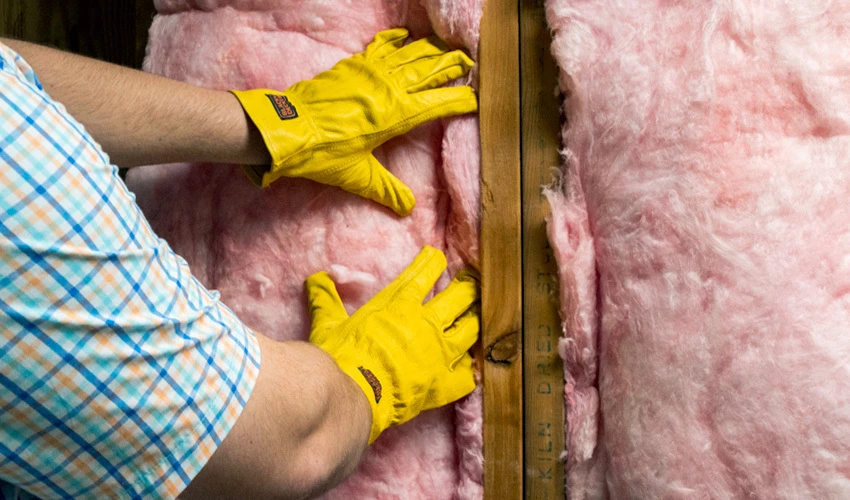
Insulating a garage is a smart way to enhance the comfort of the space while decreasing your utility bills. No homeowner wants to pay for climate-controlled air only to have it escape through the garage. And if you’re trying to make your garage a livable space, installing insulation is even more important for comfort and safety.
With the proper DIY garage insulation you can prevent air seepage, minimize temperature fluctuations, and muffle outside noises.
Keep reading to learn how insulation can improve your garage and see the seven simple steps you should take to successfully complete your own garage insulation project …
Why Should You Learn How to Insulate a Garage?
These are the top reasons homeowners insulate their garage:
- To decrease heat/cold transfer from the garage to the house and vice versa. Insulation helps your furnace and air conditioner to not have to work so hard, reducing your carbon footprint.
- To lower utility bills
- To decrease the noise level coming from outside, making it a quieter environment
- To help prevent potentially hazardous gases (like solvent fumes) from entering the home
- To create a livable space or a workshop that can be efficiently heated in the winter or that at least doesn’t have the extreme temperature fluctuations of a garage without insulation
Whether your garage is attached or unattached to your home, it has the potential to be a highly functional space. DIY garage insulation is a hassle-free, relatively straightforward way to enhance the space and make it more valuable—both for you and your family now, and in terms of future re-sale value.
How to Insulate a Garage in 7 Easy Steps
There are a few different options for the insulation product, including batt insulation, blown-in insulation, and foam board insulation. However, the easiest DIY home project is putting up batt insulation, so that’s what we will cover here:
- Measure and add up the spaces between wall studs to determine how much insulation you need to get. Divide the square footage of your walls by the square footage in one insulation package. Always round up!
- Purchase batt insulation at your local home improvement store. Batt is pre-cut cotton-fiberglass insulation that is relatively inexpensive and easy to install. It typically comes in flat sheets—with or without foil or paper facing.
- Wear proper protective clothing before handling insulation, such as long sleeves, pants, gloves, and protective eyewear.
- Installing the insulation is as simple as lining it up in the joist gap and stapling or nailing it in place. Note: If the batt insulation has facing; position it so the facing side is nearest to the living area.
- Once all the insulation is in place, you can put up drywall or any other wall material you see fit.
- If your air ducts run through your garage, it's a good idea to insulate them as well, for increased HVAC efficiency.
- If your water heater is in the garage, you can buy a specialized insulation wrap separately that will help your water heater work less hard, saving you money year-round.
Heating and Cooling Solutions for Any Space
If your garage is properly insulated, it will retain heat better throughout the air. Make your garage an all-season asset with HVAC solutions from Aire Serv. Contact a local technician to learn about heating, cooling and ventilation technologies to fit your space.
Schedule an appointment online or contact the Aire Serv nearest you today.

